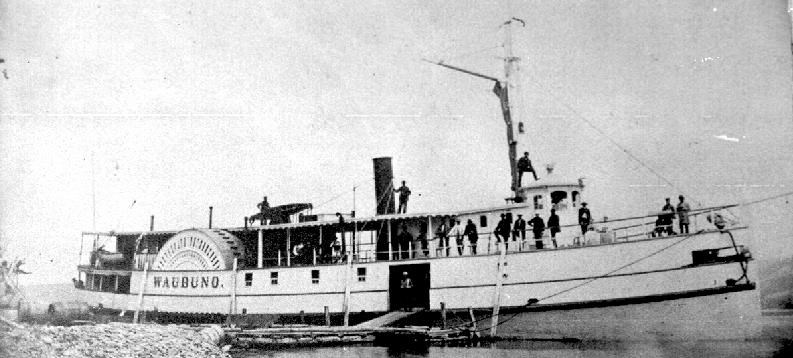On Dec. 17, 1879, Sir Charles Tupper, as Minister of Railways and Canals in the Macdonald government, officially visited Thorold, to inspect the new Welland Canal.
In 1865, the steamer Waubuno was built at Thorold by W. and J. Beatty, for the Georgian Bay Transportation Company. The vessel was wrecked near Moose Point in Nov. 1879, and the crew and passengers, 20 in number, were all lost.
The Asia, another steamer owned by the Beattys, was wrecked in a great storm on the Georgian Bay on Sept. 14, 1882, when the crew and all the passengers except two were drowned.
In 1875, the new high school building was erected in Thorold. At that time, Albert St. was opened up west of Pine. On Dec. 20, the subject of the erection of a new town hall was brought before the council, and a bylaw to raise $20,000 by debenture was submitted to the people; but was voted down by 89 to 35. In July of this year, 55 freeholders petitioned the council to have several old buildings on Front St. removed.
In 1875-6, forty-eight buildings were erected in Thorold. In the Post of July 23, 1875, we find this hopeful statement: “When the new canal is completed and factories and mills erected thereon, there will be a greater demand for houses.”
In 1876, taxes were as high as at present (1897). The people voted down a bylaw to borrow $8,000 to pay certain debts, to effect improvements and to purchase a cemetery; and therefore a tax of 25 mills on the dollar had to be levied.
During the building of the new canal, the population was increased by Italian labourers. Frequent quarrels took place among the workmen, and occasionally a “strike” among the stone-cutters would retard the progress of the work. More than once the Riot Act was read, and No. 2 Company of volunteers, under Capt. James, had to be called out to dispense the mob. Frequent arrests were made on every payday, and once in 1876, the Police Magistrate, after holding two courts on Saturday, was obliged to hold an extra session on Sunday to avoid the over-crowding of prisoners in the back-up.
The Odd Fellows’ Hall was built in 1876. In that year the market was so large that Andrew Hardie bought the fees for $500 while now only $15 a month is paid for them.
A special census for license purposes, taken in 1876, credited the town with a population of 3,673.
In 1877, a bylaw to expend $8,000 in building a fire hall was passed by the people. In the following year, a bylaw was passed for the issue of debentures for the same amount, in order to purchase a steam fire engine and hose, and to erect certain tanks and an engine house.
In 1878, the town council lowered the licenses of the nine taverns from $130 to $100 and the several liquor shops from $170 to $140.



